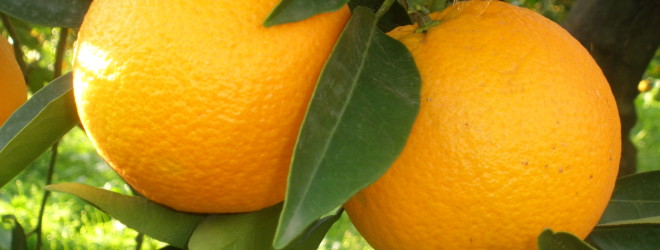Today I stopped in at one of the local natural health pharmacies here in Vancouver, and saw one of the staff recommend a product called grapefruit seed extract (GSE) to a lactating mother whose baby was suffering from oral thrush (candidiasis). Not to be confused with grape seed extract, which is commonly used as an antioxidant supplement, GSE is used as an all purpose antimicrobial in the natural health industry that is touted as being both safe and natural. In 2005 the journal Medical Herbalism [2005:14(3)] printed a letter I wrote outlining the problems with GSE, which cited several studies demonstrating that the antimicrobial property of GSE was attributable to the addition of synthetic preservatives including benzalkonium chloride and triclosan. Also found in cosmetics, dish detergents and cleaning agents, both benzalkonium chloride and triclosan are known endocrinal intoxicants and human carcinogens that pollute wastewater and are contribute to the spectre of antibiotic resistance. Since then several more studies have confirmed these findings, demonstrating that not only does grapefruit seed extract contain these synthetic antimicrobials, but that without these added ingredients, it possess no antimicrobial action. In other words, GSE is a sham product.
I am quite sure that if this new mother, who had gone out of her way to shop at this natural pharmacy, had known that the product she bought for her baby’s yeast infection was comprised of synthetic preservatives, she would have refused it. She might have even been a little angry that an ingredient commonly found in dishwashing soap was being sold to her as a natural product. My colleagues and I have done our best to urge the natural health product industry to become accountable to this problem. Not only is it sold in retail outlets, GSE is often used in other natural products for both internal and external use, including creams, lotions, liquids and capsules. In order to protect not only our clients and customers, but the reputation and integrity of the natural health product industry, I urge everyone to please avoid using GSE. There are many truly natural alternatives to GSE that are equally if not more effective.
References
1. http://medherb.com/eletter/GSE-Caldecott.pdf
2. http://www.ncbi.nlm.nih.gov/pubmed/17867553
3. http://www.ncbi.nlm.nih.gov/pubmed/17867553



Others don’t agree with you: http://www.cloverleaffarmherbs.com/grapefruit-seed-extract/
I have no experience with the product, but have seen it recommended from more than one source.
But you don’t say what products are just as if not more effective. I would sure like to know that information!
Hi Laurie,
The information in the link you provided is low-level information. It isn’t referenced and it is woefully mis-informed. Unfortunately this is not an isolated problem! Check out the references I supplied. If you have more questions please ask.
Hi Carmen
On my other website I have a full run down of infection:
http://www.toddcaldecott.com/index.php/healing/disease/168-infection
and at the bottom, a review of some plants that can be used, depending on the nature of the infection:
Treatment of infection
Once an infection is identified and it has overwhelmed the defensive mechanisms of immunity, active measures should be undertaken to inhibit infection. These should follow a basic protocol that encourages good health generally, including a good diet and a proper lifestyle. The following is a selection of herbs that can be used to inhibit viral, bacterial, fungal and parasitic infection.
1. Herbs to inhibit viral infection: Catnip (Nepeta cataria), Lemonbalm (Melissa officinalis), Echinacea (E. angustifolia), Ligusticum (L. porteri, L. canbyi), Lomatium (L. nudicaule, L. dissectum), Bhunimba (Andrographis panniculata), Wu Wei Zi (Schizandra chinense)
2. Herbs to inhibit bacterial infection: Garlic (Allium sativum), Goldenseal (Hydrastis canadensis), Guggulu (Commiphora mukul), Barberry (Berberis vulgaris), Oregon Grape (Mahonia aquifolium), Scute root (Scutellaria baicalensis), Sweet Annie (Artemisia annua), Huang Lian (Coptis spp), Neem (Azadirachta indica)
3. Herbs to inhibit fungal infection (topically and internally): Neem (Azadirachta indica), Western Red Cedar (Thuja plicata), Sweet Annie (Artemisa annua), Coptis (Coptis spp), Echinacea (E. angustifolia), Goldenseal (Hydrastis canadensis), Turmeric (Curcuma longa), Black Walnut (Juglans nigra), Eclipta (Eclipa alba, E. prostata), Spilanthes (Spilanthes acmella), Pau d’Arco (Tabebuia spp), Garlic (Allium sativum)
4. Herbs to inhibit parasites: Neem (Azadirachta indica), Sweet Annie (Artemisa annua), Turmeric (Curcuma longa), Black Walnut (Juglans nigra), Garlic (Allium sativum), Vidanga (Embelia ribes), Epazote (Dysphania ambrosioides), Hing (Ferula asafoetida), Kutaja (Holarrhena antidysenterica), Quassia (Picraena excelsa), Tansy (Tanacetum vulgare), Malefern (Dryopteris felix-mas)
Todd you have some good info! Some other good and easy to find anti-parasitics are clove and wormwood. And I use garlic on a regular basis and it is astounding! And lomantium sure knocks out a cough…especially bronchitis 🙂
Todd,
I see you have spilanthes listed under herbs to inhibit fungal infection and I have read from other trusted sources that it may be used to treat candida. Are you aware of any anti-viral or anti-bacterial activity with spilanthes? I have grown it and tinctured it, but find myself questioning the correct application for this wonderful, powerful medicine. I read it could be useful in treating Lyme.
Thanks for sharing your knowledge!
ambika
Wow.. I’ve been using a drop of GSE in water to disinfect my bite planes (anti-bruxing devices) every morning and noticed that if I use more than one drop I get oral thrush. I don’t want to use a commercial denture product — what can I use to keep my mouth devices from stinking??
Hi Ambika
Here is a summary of research for Spilanthes, from an unpublished monograph I wrote about 10 years ago:
Most of the pharmacological literature available thus far has focused on spilanthol and related isobutylamides (undeca-2E,7Z,9E-trienoic acid and undeca-2E-en-8,10-diynoic acid) (Ramsewak et al 1999). S. acmella is reported to contain as much as 1.25% of spilanthol in the flowers (Deasta et al 1993), and along with the other isobutylamides, has been found to be responsible for the sialagogue, antiseptic, antimicrobial and immunostimulant properties of the plant (Greger et al 1985, Ramsewak et al 1999). A study published in 1995 found that an extract of dried Spilanthes acmella leaf had immunomodulating properties, increasing the production of mononuclear leukocytes (Lasure et al. 1995) in vivo. In regard to the traditional usage of S. acmella as an antimalarial, spilanthol has been found to be effective at very low concentrations against Plasmodium falciparum and in vivo antimalarial activity in mice (Gasquet et al. 1993). Based on the previous study, Richo Cech (1997) speculates that spilanthol may be effective against other parasitic diseases, such as Lyme’s. An extract of Spilanthes mauritiana (roots and flowers) has been found to inhibit the growth of 105 strains of bacteria from seven genera (Staphylococcus, Enterococcus, Pseudomonas, Escherichia, Klebsiella, Salmonella, Mycobacterium) in vitro (Fabry et al. 1998), as well as Helicobacter pylori (Fabry et al. Chemotherapy 1996). S. acmella has also been found to have larvicidal properties (Pitasawat B et al. 1998). Deasta et al. (1993) report that S. acmella displayed an inhibitory effect on the growth of Candida albicans in vitro, but Fabry et al. found no such activity with an extract of Spilanthes mauritiana (Mycoses 1996). Extracts from S. acmella also show cardiovascular and spasmolytic activity on experimental animals (Dhar et al. 1968).
With regard to Spilanthes and Lyme dz, I don’t I have any experience with it. I think Lyme dz requires a more comprehensive approach. In Nepal they use medicines like Mrityunjayarasya taken with Sudarshana, and I am awaiting feedback with some patients here to see how well these are working – they say a 3 month treatment is all that is required for a cure…
Mostly I use Spilanthes for tooth and gum problems, and I find it works like a charm.
Hi Kathryn – I don’t have much experience with this, but what about something like baking soda? It absorbs odors and has anti-microbial properties. It seems to me that tinctures would get a little pricey for this use, but there are many that have antimicrobial properties. Another cheap antimicrobial is ethanol (alcohol), like everclear.
To treat the thrush, the herb we were talking about above, i.e. Spilanthes, is very effective. I use it with Myrrh and Bayberry.
What would you recommend as a natural preservative for creams and lotions other than vitamin e oil which isn’t a very strong one? Thanks for your feedback!
Hi Amanda
While I have made many medicated oils and salves, I have limited experience preparing creams and lotions, mostly just emulsions:
http://www.toddcaldecott.com/index.php/herbs/making-herbs/401-emulsions
Home-made lotions and creams often call for the use of emulsifying wax, which contains among its various ingredients polyethylene glycol, which I like to avoid. Basically, if you wouldn’t eat it or take it internally as a medicine, don’t put it on your body!
That said, herb oils and salves have a good shelf life of 2+ years if you keep them away from heat, light, oxygen and moisture. Added essential oils such as lavender and rosemary as well as natural preservatives such as tincture of benzoin or myrrh will also enhance preservation. Oil-water emulsions have a limited shelf life of about a year, but often have to be stored in the fridge. Generally I recommend that people use them quick.